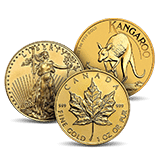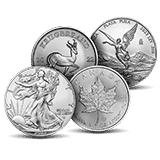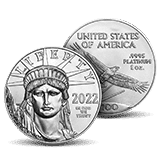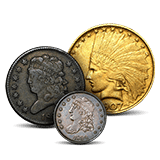
The Turkish gold kurush coin, also known as the “kuruş,” is a significant artifact of the Ottoman Empire and the early Republic of Turkey. Renowned for its high gold content and intricate design, the kurush was used for large transactions and wealth storage. Today, these coins are highly sought after by collectors and investors alike.
History of the Kurush
Early Gold Minting and Ottoman Currency
The history of gold coins in Turkey spans more than 2,500 years. The first gold coins were minted in Sardis, the capital of the ancient Kingdom of Lydia, in the 7th century B.C. These early coins established a strong tradition of gold-based wealth in the region.
By the time of the Ottoman Empire (13th–20th centuries), gold coins had become instrumental to the empire’s economic system. The Ottomans controlled a vast territory from North Africa to Central Europe and the Arabian Peninsula and needed a standardized currency to support trade and taxation across their diverse domains. This need eventually led to the introduction of the gold kurush.
The Kurush’s Introduction and Evolution
The kurush was introduced during Sultan Ahmed III’s reign (1703–1730) as part of broader currency reforms aimed at unifying the Ottoman monetary system. While initially produced in silver, it was later minted in gold and other metals to support local and international commerce.
Under Sultan Abdul Hamid II, the Ottoman Empire produced some of its most exquisitely designed gold coins during the late 19th and early 20th centuries. Despite the empire’s decline and eventual defeat in World War I, the gold kurush remained a trusted store of value. As the Republic of Turkey was established in 1923, the Turkish lira replaced the kurush as the primary currency. However, the kurush continued as a subunit, with 100 kurush equal to 1 lira. Since then, all of the below denominations of gold kurush have been reissued with new designs.
Kurush Composition, Design, and Denominations
The design of historic Turkish gold kurush coins reflected the Ottoman imperial identity. The obverse often featured the tughra, a stylized calligraphic signature of the reigning sultan. The reverse depicted key inscriptions in Arabic, including the denomination, minting year, and decorative motifs such as floral and geometric patterns. Each denomination showcases variations in design details based on size and intended use.
Gold kurush coins were minted in 0.9167 fine gold. Their size, weight, and design varied by denomination, which is listed below.
25 Kurush
- Weight: 1.804 grams
- Diameter: 14.6 mm
- Obverse: Features a simplified tughra (sultan’s signature), smaller in size due to space limitations. Floral vine patterns surround the tughra in a circular arrangement.
- Reverse: Displays the denomination in Arabic script along with the minting date. The border is decorated with small geometric patterns to emphasize symmetry and balance.
- Reissued: 1942-2023
50 Kurush
- Weight: 3.61 grams
- Diameter: 17.8 mm
- Obverse: The tughra of the reigning sultan is centered, with additional space allowing for intricate vine and scrollwork patterns that radiate outward.
- Reverse: Includes the mint name, minting year, and denomination in Arabic script. Floral elements, such as stylized tulips, are placed symmetrically around the inscriptions.
- Reissued: 1942-2013
100 Kurush
- Weight: 7.216 grams
- Diameter: 22 mm
- Obverse: The tughra appears prominently with expanded decorative details. Surrounding the tughra are ornamental knotwork patterns symbolizing eternity and unity.
- Reverse: Features a circular inscription that includes the coin’s denomination and mint name. The outer border is adorned with alternating rosettes and geometric stars.
- Reissued: 1942-2021
250 Kurush
- Weight: 18.04 grams
- Diameter: 27 mm
- Obverse: A large and elaborately detailed tughra occupies the center, encased in a crescent moon with a star at the top. This design signifies the coin’s high value.
- Reverse: The mint name and minting year are displayed in large Arabic script, encircled by decorative interlocking octagons. A stylized wreath encircles the design.
- Reissued: 1942-2013
500 Kurush
- Weight: 36.08 grams
- Diameter: 34.4 mm
- Obverse: The largest and most detailed tughra design appears on this denomination. It is surrounded by a crescent moon and star, symbolizing imperial power and grandeur.
- Reverse: Bold Arabic inscriptions indicate the mint, date, and denomination. A large, decorative wreath frames the text, symbolizing cosmic order and authority.
In addition to standard gold kurush coins, “Monnaies de Luxe” versions were minted for ceremonial purposes. These coins were larger, thinner, and more ornately designed.
Counterfeits and Authentication
The 1912 500 kurush is among the 20 most counterfeited gold coins on earth. Counterfeits often exhibit poor-quality details and tool mark flaws. To verify authenticity, collectors should:
- Inspect the tughra and inscriptions for sharp, well-defined features.
- Measure the coin’s weight and dimensions, checking them against all known issues of the denomination.
- Seeking professional evaluation from numismatists or grading services like NGC and PCGS is also recommended.
Among Turkish coins, the kurush is a testament to the legacy of the Ottoman Empire and the early Republic of Turkey. Its gold content, intricate design, and historical significance make it a cherished asset for collectors and investors alike. and economic heritage.




